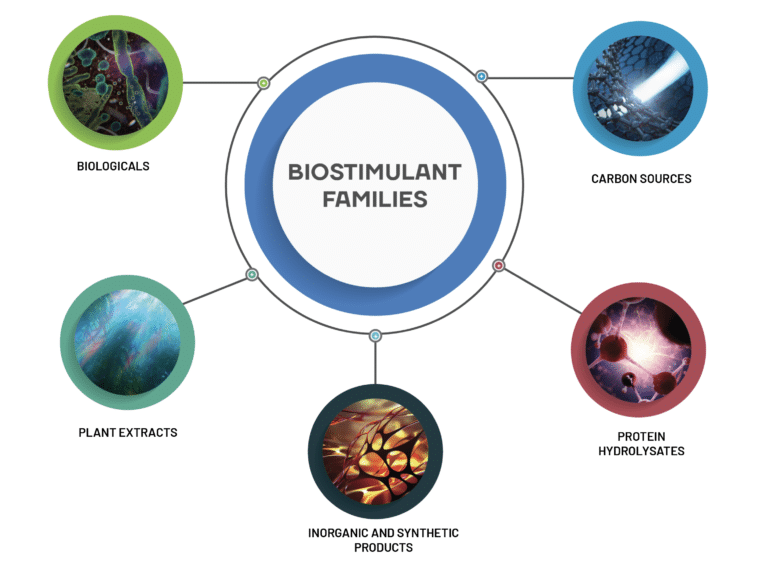
Biostimulants
A plant biostimulant is a substance or microorganism that, when applied to seeds, plants, or the rhizosphere, stimulates natural processes to enhance or benefit nutrient uptake, nutrient use efficiency, tolerance to abiotic stress, crop quality and yield.
What is a Biostimulant?
A plant biostimulant is a substance or microorganism that, when applied to seeds, plants, or the rhizosphere, stimulates natural processes to enhance or benefit nutrient uptake, nutrient use efficiency, tolerance to abiotic stress, crop quality and yield.
Biostimulants were first commercialized in the 1950’s when seaweed extracts started showing a “hormonal” response to the plant. Over the next 2 decades protein hydrolysates and humic acids were commercialized, but we only knew what these products did to the plant and NOT how they worked.
In the last 20 years, with the advancements in analytics, extraction techniques, and RNA sequencing we are now able to determine the key compounds and how they work within the plant.
Five Biostimulant Families
Each family has a different “source” mainly derived from natural compounds.

- Plant Extracts – These are mainly seaweed based extracts (eg. Ecklonia maxima and Ascophyllum nodosum). Different extraction techniques (alkaline, acid or cellburst) are used to isolate the key active ingredients. The active ingredients were thought to be auxins, cytokinins and gibberellic acid. Today, the analytics report the key compounds are phlorotannins, polyamines, brassinosteroids and organic acids.
- Carbon Sources – This family was originally referred to as Humic acids. With advancements, the family now includes Fulvic acid, and PPA (polymeric poly hydroxy acid) that contain compounds such as polyphenols, tannins, lignins, humin and lipids.
- Protein Hydrolysates – This family is a combination of peptides and amino acids. The products are created through either a chemical or enzymatic extraction process on plant or animal waste. Protein hydrolysates physiologically compliment both the plant extract and carbon sourced products.
- Biological Products – Produced from a fermentation process. Two different products can be created
- Biologicals that include Rhizobium (nitrogen fixing), and Penicillium (phosphorus solubilizing). In recent years the list now includes Bacillus, Pseudomonas, Lactobacillus, Trichoderma, Actinomycetes and Azosperillium and GD.
- Metabolites (biological free) products containing enzymes, organic acids, amino acids and other beneficial compounds.
- Inorganic and Synthetics – This product family is a collection of various compounds. The products in this family are chemically made and some of the products in this family include beneficial nutrients (silicon, cobalt, and sodium), nitrogenous compounds and phosphites.
Related Articles

How do you prevent a “herbicide hangover”?
How do you prevent a “herbicide hangover”? Due to the environmental conditions this year, the growth of the crop has been slower than normal, resulting

Are your crops stressed?
Chances are your crops have been through some stressful conditions this spring – lack of moisture, excess moisture, cold temperatures, hot temperatures – it’s been

Stress, stress, and more stress – How biostimulants can help
“A biostimulant without nutrition is like having a turbo engine in your truck but you are out of gas.” The season has just begun and







